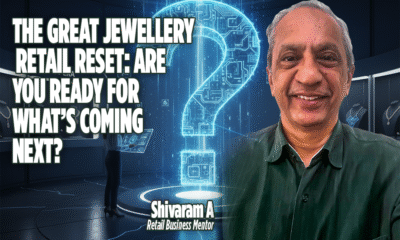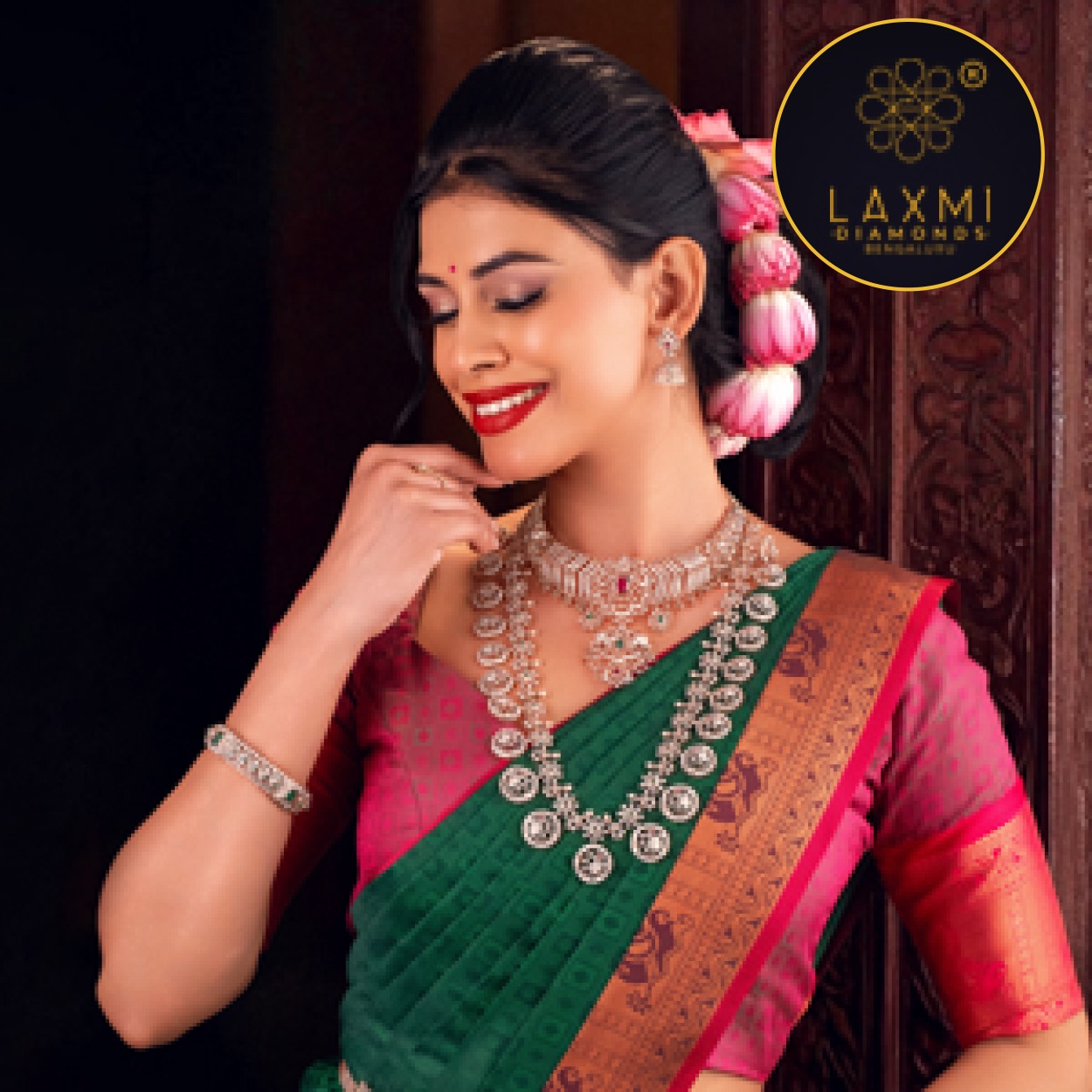By Invitation
Golden Rule I – Availability of Fast Movers
L.R.Natarajan, Partner- Strategy and Systems Consulting

LRN has worked at senior level positions in companies like Eicher Motors, Hero Motors, Greaves Cotton, Ashok Leyland, and Hindustan motors. His last employer was Titan Company limited. Eleven years in Titan Company limited (eight years in Tanishq) and retired as CEO for the new business division. LRN was also heading the innovation council at Titan and was an active member of Tata Group Innovation Forum.
LRN had successfully spearheaded the TOC implementation in Tanishq retailing.LRN had started a school for Innovation in Titan and the school had produced over 400 trained innovators.

LRN also undertakes consulting assignments from corporate companies on Strategy, Retail excellence and Innovation. He has recently authored two books, a book on Innovation titled “The 9 Nuggets of Innovation” and a book on retailing titled “Demystifying Retail” – The Four golden rules.
Prabhakar Mahadevan, Founder Director of Strategy and Systems Consulting & Focus and Flow
Technologies Pvt Ltd
Prabhakar is a certified Theory of Constraints consultant (TOC) by Goldratt Schools Israel, certified expert on TOC by TOCICO (www.tocico.org) & is associated with TOC for the last 22+ years. Through his consulting companies,Prabhakar and his colleagues are involved in several comprehensive TOC consulting projects across several industry verticals such as fashion jewellery, fast moving consumer goods, consumer durables, automotive OEM, capital machinery, pharmaceutical, heavy engineering, fashion retail etc.

In our earlier article titled “Four Golden Rules- Jewellery retailing” I had briefly introduced the four Golden Rules. In this article, I will be delving on the first Golden Rule, Fast Movers, and Availability of fast movers.
Background
All the examples in this article are pertaining to plain gold category. The age band wise break up in identifying the fast movers will be different for diamond and other categories.
Every retailer knows the importance of carrying fresh merchandise in the showroom. The general tendency of a retailer is to replenish that day’s sale, or that week’s sale with fresh merchandise. It should be noted that the daily sale or weekly sale of merchandise happens from different age of stock available in the showroom. For example, if 10 variants sell in a day, four could be from less than two month-age, three could be from 3–6 month age, and three could be from over 6 month age.
The process of replenishment for merchandise sold with age less than 2 months (can be identified as fast movers for the plain gold category) and those sold with of more than 2 months should be different. What is sold from with age less than 2 months should be replenished with the same merchandise again (exact same design variant), as it has got every chance to sell again and fast, rather than experimenting with new merchandise without any sale history. Logically, only for what sells with age beyond two months, should one attempt to bring in a different new design variant as replacement.
Fast-movers, and availability of fast movers
I shall try to cover the following points, for one’s better understanding
Guidelines for identifying the fast-movers. What can be termed as a fast-mover and how?
Processes for ensuring 90% plus availability in all retail stores where the fast mover is represented. Retail being a seasonal business, the process for fast-mover replenishment should be dynamic and in sync with market requirement.
Processes for identifying new fast movers, and processes for identifying merchandise which is no longer a fast mover.
Guidelines for identifying the fast movers
Fast movers (or the Head) are a set of merchandise which has historically given more than double the overall store stock turn.
Since most of the Jewellery retailers are operating without a unique SKU code to identify each unique design variant, the following is suggested to identify fast movers:
Identify from historical sales (last one year), the fast movers at category/ sub-category/ weight band level.
In consultation with key staff in the business and vendors identify the designs within these category/ sub-category weight bands which has potential for faster sell through.
This will be the list of fast- movers design variants to begin with.
Introduce a system for assigning unique SKU codes for each of these design variants.
What is Availability of fast movers?
Having identified fast mover design variants and mechanism to assign them with unique SKU codes, retailer needs to ensure the following:
The identified fast mover designs are represented in all applicable stores
Have a process in process in place that ensures high availability of these in the stores.
To understand what availability is, let us look at an example, depicting a typical receipt and replenishment process of a given fast moving variant.
Availability is defined as Number of Days the variant was Customer Facing in the period / Total number of days in the period.
In this illustration, in a transaction period of 90 days, the fast-moving variant was available only for 14 days (sum of customer facing days is 3+5+1+5=14 days). Hence the availability is 14/90 = 16%.
The projected stock turn for a year is 16 (in 3 months it has sold 4 times and extrapolating for a year, the sale would be 16. Since 1 pc is the average inventory, stock turn for the year is 16).
The point to ponder is, 16% availability gave a stock of 16. If the availability can be increased to 90% +, then the stock turn will improve multi fold.
Processes for ensuring 90% + availability of fast movers
From the above illustration (it is clear that) to maximize availability of fast movers, they need to be replenished as quickly as possible once their sale happens. Depending on their retail footprint (number of showrooms), retailers can adopt either of the below mentioned strategies to maximize availability of fast movers.
Scenario 1: Small and medium retailers with less than 5 Stores:
Having identified the fast mover design variants (as explained earlier), the retailers should ensure the following:
Stock 1 pc in each of the fast mover designs in the showrooms.
Once a fast mover sale happens, order the exact same SKU on the same day (or the next day) of sale.
Enter into agreements with vendors to:
Accept smaller order size and frequent ordering of fast movers designs
Colour coding and fast-tracking delivery of such orders
Remember, Shorter the lead time to replenish, shorter is the duration for which the fast mover is not available! Thus, by adopting the above practice, small and medium retailers can substantially improve availability of fast movers in their stores.
Scenario 2: Retailers with 6+ Showrooms:
Retailers with a footprint of 6+ showrooms can move to a pull-based replenishment model to ensure high availability of fast movers at stores. This model advocates holding a central buffer stock of fast mover designs. One piece of each fast mover is represented in each of the applicable store. Once fast mover sale happens at a store, it is replenished from the central buffer stock the very next day. As and when the central buffer stock level decreases (due to store replenishment), procurement action is initiated immediately to refill the central buffer stock. Since the delivery time from central buffer stock to stores would in most cases be 1or 2 days, availability of fast movers at the stores is improved substantially.
Having understood that holding a central buffer stock will enable maximising availability, the next question is what should be the level of central buffer stock one needs to carry.
Size of Central Buffer Stock:
The inventory that needs to be held is a function of the following:
Total supply lead time (ordering lead time + manufacturing lead time + logistics lead time)
Expected demand within this lead time (from all the showrooms)
Factor for some variability in demand and supply.
Let us say, the aggregated expected demand from all the showrooms to be serviced from central buffer stock is 10 / week.
If the manufacturing lead time is 2 weeks and logistics lead time is 1 week, then the central buffer stock should be able to service the expected demand for 3 weeks (assuming that supplier orders are placed the same day, Order lead time is 0, manufacturing lead time is 2 weeks and logistics lead time is 1 week, total of 3 weeks). Aggregated demand for 3 weeks would be 30 pcs (10 / week X 3 weeks).
An additional quantity is added to this 30, to factor for variability in demand and supply. Let us, say, we add 10%. So, with the factor for variability, the central buffer stock size would be 33 pcs (30 pcs aggregated demand + 3 pcs for variability).
After the buffer stock is built, when a fast mover sale happens in any of the stores, it is replenished from the central stock the very next day. When replenishment happens from the central stock, its stock level decreases. If the central stock is not replenished within the agreed lead time, there will be a high risk of not being able to fulfil the store demand from the central stock, thereby impacting availability at stores. Hence, it is imperative for retailers to have process in place to order merchandise on the same day a consumption happens and fast-tracking delivery within the agreed lead time to rebuild the central buffer stock.
By following this process, retailers with a chain of stores can maintain 90%+ availability of fast movers. It is to be noted that the increased sale from fast movers will more than compensate the cost of carrying the central stock.
There are processes available to manage the central buffer stock on an ongoing basis based on actual sale and supply performance. This ensures that the central stock carried is optimal, not too much, not too less!
Processes for identifying new fast-movers, and removing non-performing fast-movers
Sale rate of an identified fast-mover might taper down over a period. As we have discussed about the process for identifying fast-movers, we also need to have rules for removing fast-movers.
If the expected stock turn from a fast mover design variant is 8, it should sell at least one piece, from each showroom, in a period of 1.5 months. If the identified fast mover, in certain showrooms, has not sold in two consecutive 1.5 months cycle, then this merchandise can be removed from the fast-mover list for that those showrooms and the central buffer stock to be re-computed.
When we are introducing new merchandise, we should identify those merchandise which gets sold within 1.5 months, replenish the exact same variant after its first sale, monitor if the repeat sale also happens within the next 1.5 months. If such sale cycle happens in a minimum of 30% of showrooms, then such merchandise has the potential to be classified and added to fast mover list.
Summing up
To have the best of inventory effectiveness, one should understand about identifying the fast-moving merchandise. Follow it up with processes for computing the central buffer stock to ensure 90% + availability in stores. Have processes for replenishing the stores from central stock and replenishing central stock from suppliers as per agreed lead times.
These will ensure minimizing lost sale opportunities and maximizing performance of fast movers, thereby improving overall performance of the showroom.
In this continuing series, the next article will be on Golden Rule 2 – Store Planogram and processes for replenishment of Non fast movers
By Invitation
The Great Jewellery Retail Reset: Are You Ready for What’s Coming Next?
By Shivaram A,Retail Business Mentor
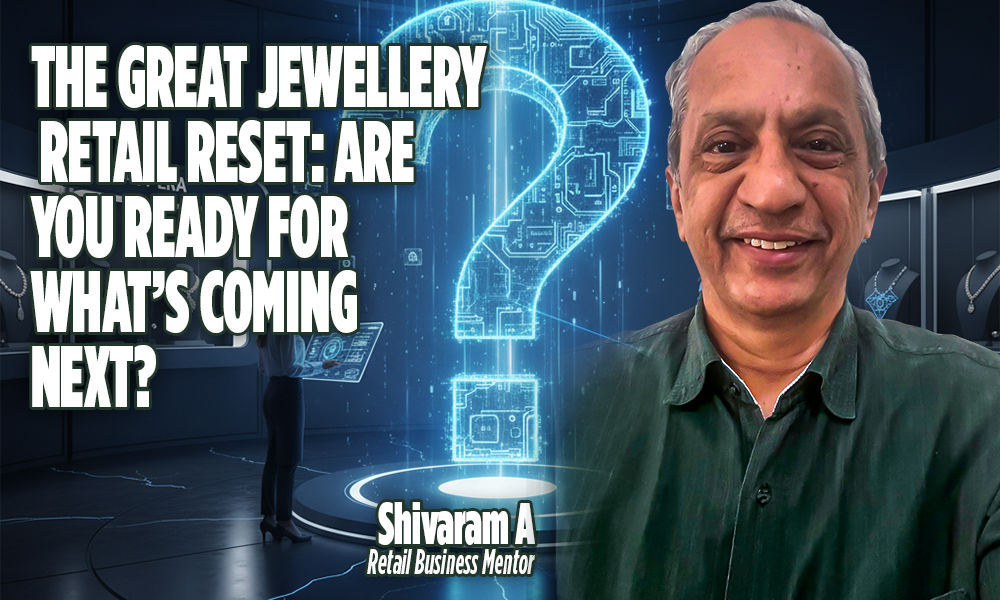
As gold prices fluctuate and customer mindsets evolve, the jewellery retail business stands at a turning point. Those who adapt with guidance will thrive — others may struggle to stay relevant.
Over the last year, jewellers across India have been living through a storm of uncertainty. Gold rates have risen, fallen, and risen again — shaking customer confidence and confusing buying behaviour. While many stores reported higher sales values during festive months, the actual number of pieces sold told a different story.
Customers were walking in — but walking out with fewer items. The same budgets, smaller volumes. The emotional connect with gold remained, but the buying intent was changing quietly beneath the surface.
A Shift in Buying Behaviour: Lighter, Smarter, More Selective
Jewellery, once seen as a long-term investment, is now also viewed through the lens of practicality and personal style. The younger buyer isn’t chasing weight anymore; they’re chasing meaning, design, and comfort.
Heavy necklaces and bangle sets have become slower movers, while rings, earrings, and lightweight chains are finding quick takers. Even as the “value” of inventory rises with gold prices, the “velocity” of sales — how quickly products move — has slowed down.
This creates an illusion of growth on paper but a challenge in reality: slower rotation, tighter margins, and customers whose expectations are changing faster than most jewellers are prepared for.
Two Customers, Two Worlds
At one end are traditional families — loyal, price-conscious, and deeply rooted in their relationship with their family jeweller. At the other end stands the new-age urban customer — salaried, educated, and brand-aware.
This second group is the real disruptor. They don’t see gold as an emergency asset but as an accessory that defines lifestyle. They browse online, compare designs across stores, and choose convenience over custom.
For them, jewellery is fashion — not finance. And that single shift is rewriting the rules of the game.

Competition Is Heating Up
As independent jewellers fight to maintain margins, larger chains are expanding quietly — opening new showrooms, entering Tier 2 and Tier 3 towns, and capturing the very customers smaller stores once depended on.
Adding to the mix are non-jewellery investors and new entrants drawn by the industry’s steady performance compared to other sectors. With over 10,000 new stores expected to open in the next few years, competition will only intensify.
This means the traditional family jeweller can no longer depend solely on legacy, relationships, or word-of-mouth. What’s needed now is strategy, structure, and smarter decision-making — powered by data, training, and mentorship.

Change Is Hard — But Help Is Available
Transitioning from a legacy business model to a modern retail approach isn’t easy. It involves rethinking everything from sales processes to staff mindset, from customer experience to inventory strategy.
But the good news is — you don’t have to do it alone.
Every successful transformation begins with one conversation — a discussion about where you are, what’s changing, and how to move forward one step at a time.
That’s where mentorship makes the difference. A seasoned guide can help you see patterns others miss, avoid expensive mistakes, and build a roadmap that’s realistic and sustainable.

Jewellery retail is evolving — and those who evolve with it will shine brighter in the years ahead.
While change is always tough, it is also necessary. The key is to take it step by step, guided by experience and insight.
If you’re wondering where to start or how to navigate the next phase of your business transformation — let’s talk.
-

 JB Insights16 hours ago
JB Insights16 hours agoTransforming the Future of Precious Metal Processing — Doit Industries’ New Line of Smart Systems
-
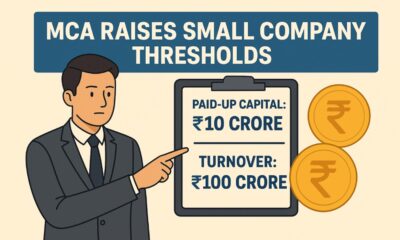
 BrandBuzz2 days ago
BrandBuzz2 days agoMCA raises “small company” thresholds – up to ₹10 cr capital & ₹100 cr turnover from 1st December 2025, major relief for jewellery trade
-

 National News16 hours ago
National News16 hours agoShringar House of Mangalsutra Secures IAGES Accreditation, reinforcing its leadership in ethical gold standards
-
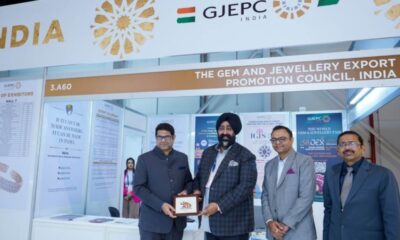
 International News17 hours ago
International News17 hours agoGJEPC hosts Indian Ambassador at 22nd India Pavilion at Jewellery Arabia Show






